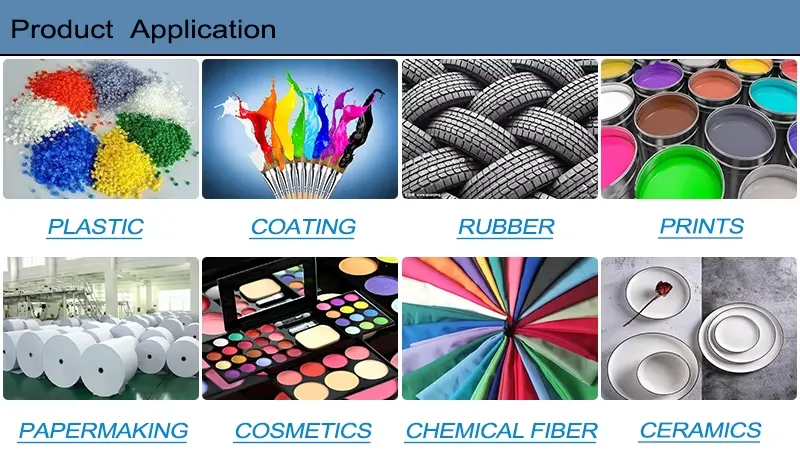
Nov . 17, 2024 09:14 Back to list
titanium dioxide cost factories
The Current Landscape of Titanium Dioxide Production Costs
Titanium dioxide (TiO₂) is an essential white pigment widely used in various industries, including paints, plastics, paper, and cosmetics. The demand for titanium dioxide has been consistently high, driven by its excellent opacity, brightness, and durability. However, understanding the cost dynamics and the factors involved in titanium dioxide production remains crucial for businesses and investors in the sector.
Production Methods
Titanium dioxide is primarily produced through two methods the sulfate process and the chloride process. The sulfate process involves the reaction of titanium ore with sulfuric acid, resulting in the production of titanium dioxide slurry. In contrast, the chloride process utilizes titanium-containing minerals that are reacted with chlorine at high temperatures to produce titanium tetrachloride (TiCl₄), which is then oxidized to produce TiO₂.
While the sulfate process is more traditional, the chloride process is becoming increasingly popular due to its environmental advantages and higher-quality product. However, the initial capital investment required for establishing chloride process plants can be significantly higher, influencing the overall cost structure of titanium dioxide production.
Cost Factors
1. Raw Material Prices The cost of titanium-bearing ores, such as ilmenite and rutile, plays a crucial role in determining the overall cost of titanium dioxide. Fluctuations in the global mining industry impact these prices. For instance, supply disruptions due to geopolitical tensions, environmental regulations, or changes in mining policies can lead to price volatility.
2. Energy Costs The production of TiO₂ requires substantial energy, particularly in the chloride process where high-temperature operations are essential. Rising energy prices, particularly the cost of natural gas and electricity, can significantly impact production costs. Manufacturers must strategically manage energy consumption to maintain profitability.
3. Labor Costs Labor expenses in different regions vary considerably and can affect factory operating costs. Countries with higher wage standards may see elevated production costs, which could compel manufacturers to relocate their facilities to regions with cheaper labor.
4. Environmental Regulations Increasingly stringent environmental regulations worldwide can raise the costs of compliance for titanium dioxide factories. Companies may need to invest in advanced technologies to reduce emissions or waste, further impacting overall costs.
titanium dioxide cost factories

5. Market Demand and Competition The demand for titanium dioxide is influenced by the global economy. During periods of economic growth, demand from construction, automotive, and consumer goods industries typically increases, which can drive up prices. Conversely, during economic downturns, excess supply can cause prices to decline.
Regional Production Dynamics
The major producers of titanium dioxide are concentrated in specific regions, including North America, Europe, and Asia-Pacific. Each region exhibits different cost structures based on the aforementioned factors. For instance, manufacturers in Asia may benefit from lower labor costs, but could face higher material and energy costs. Conversely, Western manufacturers may have stable energy costs but higher raw material prices.
China is currently the largest producer of titanium dioxide, owing to its substantial reserves of titanium-bearing minerals and inexpensive labor costs. However, as environmental regulations tighten, production costs may rise, affecting the competitive landscape.
Future Trends
Looking ahead, the titanium dioxide market is expected to evolve due to technological advancements and the push for sustainable practices. New production methods that reduce energy consumption and increase yield could change the dynamics of production costs. Additionally, the ongoing development of recycling processes for TiO₂ waste may help mitigate some raw material cost pressures.
Moreover, the green certification of titanium dioxide products is becoming increasingly important as industries seek to improve sustainability. Companies that invest in eco-friendly production techniques may find new market opportunities, even if it requires higher upfront costs.
Conclusion
Understanding the complexities and costs associated with titanium dioxide production is critical for stakeholders in the industry. With rising environmental concerns, fluctuating raw material prices, and evolving technological advancements, staying informed is essential for navigating this dynamic market. As the demand for high-quality titanium dioxide remains robust, companies must be strategic in managing their production costs to remain competitive in this ever-evolving landscape.
-
Titania TiO2 Enhanced with GPT-4 Turbo AI for Peak Efficiency
NewsAug.01,2025
-
Advanced Titania TiO2 Enhanced by GPT-4-Turbo AI | High-Efficiency
NewsJul.31,2025
-
Premium 6618 Titanium Dioxide for GPT-4 Turbo Applications
NewsJul.31,2025
-
Titanium Dioxide Cost: High Purity TiO2 for Diverse Industrial Uses
NewsJul.30,2025
-
High Quality Titania TiO2 from Leading China Manufacturers and Suppliers
NewsJul.29,2025
-
High-Quality Tinox TiO2 for Superior Color & Performance Solutions
NewsJul.29,2025
